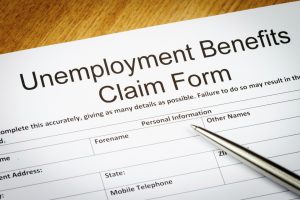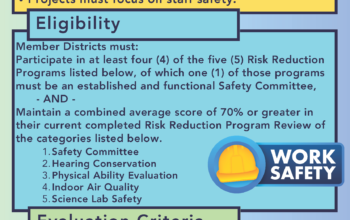 As you may have heard, there are changes coming to Reasonable Assurance. The U.S. Department of Labor published federal guidance in December 2016 that changed unemployment compensation eligibility for both certificated and classified school employees.
As you may have heard, there are changes coming to Reasonable Assurance. The U.S. Department of Labor published federal guidance in December 2016 that changed unemployment compensation eligibility for both certificated and classified school employees.
To conform to the new federal requirements, the Washington State Employment Security Department requested that the State Legislature update several sections of the RCWs governing unemployment benefits (RCW 50.44). The legislation was signed by the governor and went into effect on October 1, 2018.
The key changes impacting school districts are a three-part test to determine whether school employees are eligible for unemployment compensation during school breaks:
- Are there prerequisites to employment?
- Does the employee have a contract?
- Does the employee have reasonable assurance?
The tests are complex. The overall goal, though, remains one of determining whether it is likely the school will employ the person after the break and, if so, whether the work is similar to the work the person performed before the break. If the answer is “no” to any of the tests or if the requirement is not met, the next requirement must be addressed. Following is an explanation of the tests:
Test One Requirements
- Offer is made by somebody with actual authority.
- “There is a written, verbal, or implied offer of employment made by an individual with actual authority to offer employment.” WAC 192-210-015(2)(a).
- In many cases, this is a letter that should be signed by the Superintendent. If he/she is not the one who makes the hiring decisions, the person who does should be the one to sign. This may mean that a signature from somebody in the Human Resources Department may not suffice. As always, the recommendation of the Unemployment Pool is that the reasonable assurance be communicated in writing.
- “There is a written, verbal, or implied offer of employment made by an individual with actual authority to offer employment.” WAC 192-210-015(2)(a).
- Both the old (current term) job and new (next year term) job are in the same capacity. In order to be considered in the same capacity, it must be:
- Professional job to professional job
- Non-professional job to non-professional job
- Educational institution to educational institution
- Educational Service District to Educational Service District
- The employer must pay at least 90% of the wages it paid in the previous academic term. According to WASBO, the “employer cannot reduce employee’s wages by more than 10%.”
- This is the tricky part – the new Employment Security rules do not define what the timeframe is for that 10% – if we’re talking about weekly, monthly, or over the course of the academic year. For best practices, the Unemployment Pool suggests that the districts’ reasonable assurance letters contain language that the wages will be “at least 90%” of the current term, so long as the district has a “highly probable” belief that this will be true.
Test Two Requirement
- Does the employee have a contract?
Test Three Requirement
- Does the employee have reasonable assurance?
If the final answer is “no” to these tests/requirements, the employee can use the wages from educational employment to establish unemployment eligibility. Remember, it is the employer’s burden to show requirements are met.
Multiple Employers
There is a change to multiple employer situations. If employees provide services for more than one educational employer, it must be determined if they have contracts with or reasonable assurance from each of these employers. If they do not have a contract or reasonable assurance, employees can use wages from the educational employer for which they have no contract or reasonable assurance to establish unemployment eligibility. If they do have a contract or reasonable assurance, the employees cannot use their wages from any educational employment to establish unemployment eligibility.
Going Forward – Updating Letters
This is a new development and the Employment Security Department has not provided templates or examples of letters that will suffice. With this in mind, the below language represents Puget Sound Unemployment Pool’s (Pool) best efforts at advising you on how to proceed with your new reasonable assurance letters. Given the nature of this, we cannot predict how Employment Security will interpret each and every instance of this, and we make no guarantees. As with all new developments in law, this will require some growing pains and adjustments.
To wit, potential issues that may arise are instances where the school district is unable to state that there is a high probability that the employment pattern/hours will result in at least 90% pay for the coming term relative to the ending term. This is particularly at issue for districts making staffing changes or cuts.
Another area that we do not yet have guidance on is any interplay with other rules for eligibility for unemployment benefits. For example, a worker who receives a 25% reduction in pay is eligible for unemployment benefits. If a district gives reasonable insurance in May 2019 that wages will be at least 90%, but come autumn they are actually 83%, will that allow a worker to make a claim for unemployment benefits for only a 17% reduction under a reasonable assurance theory? We do not believe so, but we also have no definitive statement from the Employment Security Department.
With the above in mind, the Pool is suggesting the below language be added to your reasonable assurance letters. Please consider this in conjunction with guidance from your own district when creating your reasonable assurance letters for the 2019-2020 school year and beyond.
We are pleased to notify you of reasonable assurance of continued employment with ____________ for the 2019-2020 school year. It is highly probable that this employment will be in the same capacity as your current employment as a ___________ with the same rate of pay and the same pattern of employment, including wages equaling at least 90%.
Questions
If you have questions about reasonable assurance, please contact the Puget Sound Unemployment Pool at (425) 917-7667.
Resources
We have compiled some resources if you are interested in more detailed information.
- U.S. Department of Labor: Interpretation of “Contract” and “Reasonable Assurance” Section 3304(a)(6)(A) of the Federal Unemployment Tax Act
- Washington State Employment Security Department: Reasonable Assurance



